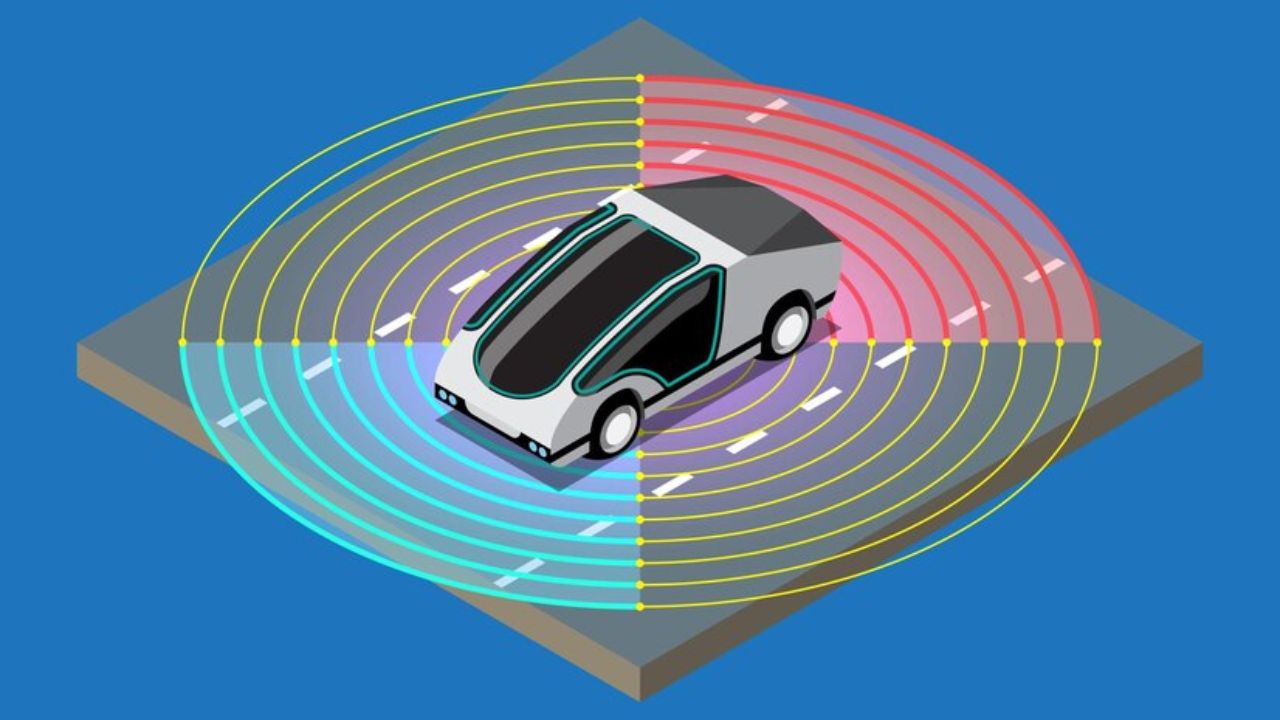BLOG
RDA-HDWKT Audi SQ5: A Comprehensive Guide to Clutter-Free Radar Detection Installation

Are you ready to elevate your driving experience? The RDA-HDWKT Audi SQ5 is your ultimate solution for seamless and discreet radar detection. This guide will walk you through everything you need to know about clutter-free radar detection installation, ensuring it not only works optimally but also complements the sleek interior of your Audi SQ5.
Here’s what you’ll learn in this step-by-step guide:
- Why the RDA-HDWKT is the go-to choice for radar detection systems
- The benefits of a clean, professional installation for your SQ5
- A detailed installation walkthrough to ensure a polished and functional setup
Whether you’re a DIY enthusiast or planning a professional install, this guide will help you achieve the perfect balance of performance and design.
Why Choose the RDA-HDWKT Audi SQ5?
Radar detection has become increasingly important for modern drivers. From enhancing overall safety to avoiding unexpected speeding tickets, a reliable radar detector is essential. But why is the RDA-HDWKT the preferred choice?
1. Seamless Integration with Audi SQ5
Designed specifically for the Audi SQ5, the RDA-HDWKT complements your car’s state-of-the-art technology and aesthetics. Its discreet design ensures a clean dashboard look, so you won’t have wires or clunky devices in your way.
2. High-Performance Radar Detection
Equipped with cutting-edge sensors, the RDA-HDWKT ensures precise detection of traffic monitoring systems. It provides advanced warnings, giving you ample time to adjust your speed or driving behavior.
3. User-Friendly Functionality
The system is easy to operate and features clear alerts, so you can stay focused on the road ahead. Features like false alert filtering ensure you only get notifications when necessary.
4. Long-Term Cost Efficiency
By investing in the RDA-HDWKT, you save on potential fines and reduce wear and tear caused by sudden braking. Its sleek installation ensures durability, providing you with years of reliable service.
The Advantages of a Clutter-Free Installation
A proper radar detector installation isn’t just about performance—it’s also about maintaining the aesthetic integrity of your Audi SQ5. Here’s why cleanliness and order matter.
Maintain the Interior’s Appeal
The Audi SQ5 is known for its luxurious and modern design. A clutter-free installation ensures wires, brackets, or adhesive mounts don’t interfere with its refined appearance.
Prevent Equipment Obstructions
Loose wires and poorly mounted devices can hinder your access to important car functions. A clean installation eliminates these obstacles, contributing to a safer and more enjoyable driving experience.
Optimize Radar Detector Performance
Well-placed and securely mounted detectors are more accurate. A clutter-free setup ensures the radar unit works flawlessly, avoiding false alerts or missed detections due to poor alignment.
Increase Resale Value
When it’s time to upgrade your SQ5, a professional radar detector installation ensures the car has no unsightly modifications, boosting its resale value.
Now that you understand the importance of a tidy installation, let’s get into the how-to.
Step-by-Step Installation Guide for the RDA-HDWKT in the Audi SQ5
Follow these steps to achieve a seamless, factory-like radar detection setup in your Audi SQ5.
Tools Needed
Before starting, gather these tools:
- Phillips and flathead screwdrivers
- Wire stripper/crimping tool
- Electrical tape
- Multimeter (for testing power connections)
- Mounting brackets (included with the RDA-HDWKT kit)
1. Choose the Ideal Mounting Location
- Mount the radar detector in a spot with unobstructed views of the road. The most common and effective locations are either behind the rearview mirror or low on the windshield.
- Ensure the placement aligns with local laws regarding radar detector visibility.
2. Route the Wiring
- Begin by identifying a power source within your Audi SQ5’s cabin, such as the fuse box or 12V power outlet.
- Route the power and ground wires carefully along the vehicle’s interior panels for a hidden look. Use tools like a trim removal tool to tuck wires neatly.
3. Secure the Radar Detector
- Use the mounting brackets provided in the RDA-HDWKT kit to securely attach the radar detector to your chosen mounting location.
- Ensure the detector is level and properly aligned horizontally and vertically.
4. Connect the Power Source
- Using your multimeter, identify the correct fuse in your Audi SQ5 to tap into. Common choices include those linked to the cigarette lighter or accessory ports.
- Use a fuse tap for a safe and reliable connection.
5. Test the System
- Once everything is connected, turn on your Audi SQ5 and check if the radar detector powers on.
- Drive through a test area with known radar activity to ensure the system works as expected.
6. Fine-Tune the Setup
- Adjust the positioning of the radar detector for optimal performance.
- Secure all loose wires using electrical tape to prevent them from moving over time.
Note: If you’re not confident in your DIY abilities, consider hiring a professional installer. A professional setup ensures your RDA-HDWKT radar detector is mounted and connected flawlessly.
Pro Tips for a Long-Lasting Installation
Follow these expert tips to keep your radar detection system in top condition for years to come.
- Regular Cleaning: Dust and debris can accumulate on the detector lens, potentially affecting performance. Clean it regularly with a microfiber cloth.
- Software Updates: Check the manufacturer’s website for firmware updates to keep your RDA-HDWKT operating at peak efficiency.
- Avoid Overexposure: Try to park in shaded areas to protect your radar detector from extreme heat, which can damage sensitive electronics over time.
- Secure Connections: Periodically inspect wiring and mounts to ensure everything is secure and functioning correctly.
By following these maintenance tips, you’ll maximize the lifespan and efficiency of your radar detector.
Drive Smarter and Cleaner
Installing the RDA-HDWKT Audi SQ5 is one of the best decisions you can make for a smarter, safer driving experience. Not only does it provide superior radar detection, but its professional installation ensures your car remains as beautiful as the day you drove it off the lot.
If you’re still unsure about certain steps or need expert guidance, don’t hesitate to consult a professional installer or your dealership. Drive with confidence knowing you’ve got the best radar detection system working seamlessly in your Audi SQ5.
Are you ready to install your radar detector and take your driving experience to the next level? Grab the RDA-HDWKT now and experience the ultimate combination of functionality and style!
BLOG
The Art and Precision of Modern Metal Cutting Techniques

Metal cutting is a crucial procedure in numerous sectors, allowing for the transformation of raw metals into precise shapes and sizes required for specific applications. The significance of precision metal cutting cannot be overstated, as it contributes significantly to advancements in manufacturing and engineering. Metal cutting techniques have evolved to support the creation of components integral to modern engineering projects, from intricate parts requiring extraordinary precision to robust components designed to withstand severe conditions. This article delves into the evolution, techniques, and future trends of metal cutting, a crucial aspect of modern industrial processes, offering insight into how these sophisticated techniques are shaping the world around us.
Introduction to Metal Cutting
At the core of manufacturing is metal cutting, a process that not only turns raw materials into essential components but also influences the quality and performance of the final product. Without accurate metal cutting, industries would struggle to satisfy the strict demands of contemporary machinery and infrastructure. This procedure is fundamental in manufacturing, allowing engineers and designers to expand the limits of functionality and aesthetics across a range of products, from everyday household items to advanced aerospace innovations. As such, understanding metal cutting involves being familiar with the techniques and appreciating their broader impact on technology and innovation.
The Evolution of Metal Cutting Technology
Metal cutting technology has transformed remarkably from the early days of hammers and chisels to today’s high-tech laser cutters—initially, manual tools required skilled labor and significant time investments for detailed cuts. However, the invention of power tools brought more speed but with limited precision. The transformative advent of CNC machines marked a significant milestone, introducing computerized controls that allowed for unparalleled accuracy and consistency in production processes. This shift improved efficiency and opened new possibilities for complex geometries previously impossible to achieve with manual methods. In recent years, technological advancements such as laser cutting have enabled the handling of ultra-fine materials with minimal waste and maximum accuracy.
Common Metal Cutting Techniques
The array of metal cutting techniques available today, including laser, plasma, and waterjet cutting, offers an extensive toolkit for manufacturers and engineers. Laser cutting, renowned for its precision, uses focused light to slice through materials with exceptional accuracy and detail, making it ideal for small parts with intricate designs. Plasma cutting, using electrically conductive gas, provides a high-speed option suited for thicker materials, thus balancing cost with performance. Waterjet cutting stands out because it employs a high-pressure stream of water, often mixed with abrasives, to cut through virtually any material without introducing heat, thus preventing material warping.
Industries Relying on Metal Cutting
Metal cutting is indispensable in industries such as automotive and aerospace. From crafting the body of a vehicle to developing detailed turbine blades, the demand for flawless execution relies heavily on advanced metal cutting. In these sectors, recent updates in metal fabrication techniques are critical to enhancing the efficiency and functionality of parts. In construction and infrastructure, metal cutting is essential in creating the structural components that form the backbone of modern society, underscoring its universal application across various essential sectors.
Innovative Tools in Metal Cutting
Modern metal cutting tools have seen significant advancements to meet the needs of industry professionals who demand more from their equipment. Innovations like smart tools with IoT capabilities allow for real-time monitoring and adjustments, increasing safety and efficiency. These tools, often integrated with AI-driven systems, can learn and adapt to intricate tasks, minimizing errors and enhancing productivity. Advances in materials, such as diamond-edged cutting tools, contribute to longer tool life and cleaner cuts, which are crucial in high-precision environments like electronics and medical devices.
Safety and Environmental Considerations
Safety remains a top priority in metal-cutting environments due to potential hazards such as flying debris, harmful noise levels, and intense light emissions. Adhering to safety protocols, such as wearing personal protective equipment (PPE) and properly maintaining machinery, significantly reduces these risks. Environmental considerations are equally vital, with an increasing focus on reducing waste and energy consumption. Implementing sustainable practices underscores the growing commitment across industries to ecological responsibility.
Future Trends in Metal Cutting
As we look ahead, the field of metal cutting is set for thrilling advancements propelled by technological progress and growing environmental awareness. Techniques such as hybrid cutting systems, which combine different methods for optimal results, are on the rise. At the forefront of these advancements is the integration of AI, which promises enhanced predictive maintenance and operational efficiency. Moreover, sustainable cutting solutions, aided by eco-friendly technologies and materials, are transforming the industry to be more compliant with global green standards. Staying abreast of engineering innovations and enhancing productivity will be key to maintaining competitive advantage as the industry evolves.
Conclusion
In conclusion, metal cutting is a vital process that is continuously advancing in its techniques and applications, shaping the fabric of modern industry. Its evolution from manual to high-tech methods underscores the dynamic nature of technological progression in meeting ever-increasing demands for precision and efficiency. As we navigate future challenges and innovations, the emphasis on sustainable practices and cutting-edge technology will define the trajectory of this essential industrial process, ensuring that metal cutting remains at the forefront of manufacturing and design innovation for years to come.
BLOG
Transform Your Bathroom: Creative Remodeling Ideas to Enhance Functionality and Style

Introduction to Bathroom Remodeling
Revamping your bathroom isn’t just about creating a luxurious retreat; it can also significantly boost your property’s value. With home renovation trends rising, embracing innovative ideas in bathroom remodeling can turn your personal space into a serene sanctuary. For those seeking inspiring transformations, explore diverse projects at https://aldrichcontracting.com/our-work/bathroom-remodeling/ that illustrate the art of blending functionality with aesthetics. A well-executed remodel doesn’t merely refresh the visual appeal but enhances everyday usability, making your bathroom a place of relaxation and renewal.
Homeowners increasingly recognize the bathroom as a pivotal space deserving of special attention. Often seen merely as a utilitarian space in years past, the modern bathroom now serves as a refuge from the busyness of daily life. From contemporary fixtures to sustainable materials, the scope for creativity is vast. Dive into these remodeling ideas that promise to elevate your bathroom’s style and efficiency, creating a place of comfort and an expression of personal style.
Benefits of a Bathroom Makeover
Upgrading your bathroom is a savvy investment yielding aesthetic enhancement and increased property value. A remodeled bathroom captivates potential buyers and adds to the appeal of your home. According to the Cost vs. Value Report, bathroom renovations often result in substantial returns during a home’s resale. From modern fixtures to innovative design elements, a well-executed bathroom upgrade can transform your space into a sophisticated sanctuary, supporting style and function. The addition of spa-like amenities—rain showers, soaking tubs, and radiant floor heating—turns everyday routines into moments of luxury, thus providing long-term satisfaction and enhancing the property’s appeal.
Popular Styles for Modern Bathrooms
Regarding style, bathrooms offer a canvas for creativity and personal expression. Contemporary trends favor minimalist designs, vintage flair, and industrial chic aesthetics. By focusing on sleek lines, neutral palettes, and non-cluttered decor, minimalist designs impart a sense of calm and increase the room’s elegance. Meanwhile, vintage elements such as claw-foot tubs, antique fixtures, and retro tiles introduce nostalgia and charm, making the space unique and inviting. The industrial chic style combines raw materials like exposed brick and metal accents, bringing an edgy vibe and practical durability. Whether opting for modern minimalism or bold vintage touches, the right blend of style and personal taste can create a functional and luxurious bathroom.
Enhancing Space Efficiency and Functionality
Efficient design is key to a successful bathroom remodel, especially in smaller spaces. Creative storage solutions like floating shelves, hidden cabinets, and recessed niches can increase storage without consuming floor space. To enhance usability, choosing fixtures that fit the bathroom’s dimensions and meet its users’ daily needs is essential. Consider dual-function installations like a vanity with under-sink storage or a mirror with integrated lighting. Thoughtful design maximizes space and elevates functionality, ensuring that even the smallest bathrooms feel expansive and practical. By choosing innovative layout designs, homeowners can balance style and efficiency, maximizing every inch of their remodeled space.
The Role of Eco-Friendly Materials
Embracing sustainable materials in your bathroom remodel is a win for the environment and your home’s aesthetic appeal. Opt for low-flow toilets and faucets, significantly reducing water consumption while maintaining performance. Eco-friendly tiles from recycled glass or porcelain offer style and sustainability, aligning good design with ecological responsibility. Exploring the full potential of sustainable options is transformative. By choosing green alternatives such as bamboo flooring, VOC-free paints, and recycled fixtures, homeowners contribute to a healthier planet while enjoying the long-lasting benefits of quality materials.
Budgeting for a Bathroom Remodel
Planning a bathroom remodel necessitates a clear strategy to adhere to your financial limitations while maximizing the results. It’s essential to identify project aspects where splurging is advantageous—such as investing in high-quality countertops, shower systems, or custom cabinetry—and where cost-effective solutions can be applied, like selecting budget-friendly lighting or tiling. Careful planning makes achieving a balanced approach that fulfills aesthetic desires and practical needs possible without financial strain. Engaging with professionals for a detailed scope of work ensures transparency. It allows homeowners to adjust their expectations and budgets accordingly, resulting in a reliably managed project from start to finish.
Conclusion: Tips for a Successful Renovation
Transforming your bathroom can be a rewarding endeavor that combines creativity with practicality. Remember to tailor your design to reflect your style, embrace efficiency, and practice sustainable living. From sleek modern designs to quiet vintage charm, the possibilities are endless. By balancing indulgence with innovation, your new bathroom can become a luxurious retreat that adds significant value and comfort to your home. Whether through minor tweaks or a full-scale makeover, successful renovations hinge on thoughtful planning and execution, ensuring lasting satisfaction and aesthetic appeal.
BLOG
How Botox Works: Understanding the Science Behind Smoother Skin

Botox is a popular cosmetic procedure known for smoothing wrinkles and fine lines. It works by temporarily paralyzing specific facial muscles. Understanding the science behind Botox can help individuals make informed choices about its use.
Introduction
Botox is one of the most well-known cosmetic procedures. Widely used to reduce the appearance of wrinkles, many people seek Botox treatments for their proven effectiveness and minimal recovery time. But what about Botox? What makes it so successful in achieving smoother skin?
Exploring Botox’s scientific basis is essential to understanding its impact. This article delves into the biological mechanisms that underpin Botox treatments, elucidating how this substance achieves its desirable effects. This exploration is timely and invaluable for individuals contemplating Botox or those interested in the biochemistry behind smoother, more youthful skin.
The Mechanism of Botox
Botox, medically known as botulinum toxin, is derived from a bacterium called Clostridium botulinum. While it originated from a toxin, researchers have harnessed its properties to safely and effectively address cosmetic concerns. Botox targets the nervous system; more specifically, it blocks the release of acetylcholine, a neurotransmitter responsible for muscle contraction.
When a small, controlled dose of Botox is injected into specific facial muscles, it inhibits the nerve signals that trigger muscle contractions. This temporary paralysis relaxes wrinkles and fine lines, resulting in a smoother appearance. Botox can be employed in various settings, such as Salt Lake City, where skilled botox in Salt Lake City provides tailored treatments for a diverse clientele.
How Botox is Applied
The application of Botox is a precise process that requires a trained healthcare professional to ensure safety and desired outcomes. The journey begins with a comprehensive consultation, during which the patient’s goals and medical history are assessed. Understanding the facial anatomy is crucial, as it allows the practitioner to identify target areas for injection.
Once the target muscles are identified, the practitioner uses fine needles to inject the Botox directly into these areas. This minimally invasive procedure usually takes less than 30 minutes, allowing patients to resume their daily activities immediately. Knowing the optimal dosage and injection technique is key to preventing over or under-treatment.
Effects on Muscles and Skin
The effects of Botox are both direct and indirect. Botox provides immediate relief from expression lines by acting on muscle contractions, particularly the dynamic wrinkles that form with facial movements. Over time, the skin above these relaxed muscles starts to smooth out as constant tension is relieved, allowing the skin to recover.
In addition to cosmetic improvements, Botox has been used for medical purposes, such as treating migraines and excessive sweating. Skin starts to feel more supple and youthful, and these aesthetic changes often boost self-confidence, reflecting a positive psychological impact.
Duration and Maintenance
The effects of Botox are not permanent, which means recurring treatments are necessary to maintain results. Typically, the smoothing effects can be seen within a few days post-injection, with full results visible by the two-week mark. On average, the effects of a Botox treatment last between three to six months.
Individuals often schedule follow-up appointments for ongoing smoothness to ensure minimal lapse in muscle relaxation. With regular treatments, some find they can extend the time between sessions as their muscles gradually adapt to reduced activity. Each session should be tailored to the patient to prevent muscle atrophy or other adverse effects.
Safety and Efficacy
Botox is well-regarded for its safety when administered by a trained and experienced professional. While potential side effects like bruising or minor swelling can occur, serious complications are rare. Following post-treatment guidelines, such as avoiding strenuous activities and keeping the head upright, can mitigate risks.
Its efficacy is backed by numerous clinical studies and satisfied patients who continue to choose Botox for their aesthetic goals. The assurance of predictable outcomes makes Botox a staple in cosmetic dermatology. Nevertheless, candid conversations with healthcare providers ensure patients have realistic expectations and understand the procedure’s limitations and benefits.
Conclusion
Botox remains a cornerstone in contemporary cosmetic medicine, providing individuals with the means to achieve smoother, more vibrant-looking skin. Understanding the science behind Botox allows for informed decisions, empowering those considering this treatment to pursue it confidently.
By working with qualified professionals and clearly understanding its mechanism and effects, Botox can seamlessly fit into a skincare regimen, offering aesthetic and psychological benefits. As research continues to refine its use, Botox will likely remain at the forefront of beauty innovations, demonstrating its enduring value.
-

 BLOG12 months ago
BLOG12 months agoBebasIndo: Transforming Service Accessibility Across Indonesia
-

 TECH12 months ago
TECH12 months agoLepbound: Unlocking the Hidden Power of Optimization in Science and Technology
-

 ENTERTAINMENT12 months ago
ENTERTAINMENT12 months agoDiamond Pink: A Rare Gem, A Precious Possession
-

 BUSINESS11 months ago
BUSINESS11 months agoChannelsyncharma: Your Guide to Effective Channel Management
-

 BUSINESS11 months ago
BUSINESS11 months agoQuick Relief with Immediate 0.3 Folex
-

 TECH12 months ago
TECH12 months agoGirma Zekpa: An Influential Figure in Business and Technology
-

 NEWS12 months ago
NEWS12 months agoSo Ji-Sub LPSG: From Model to Star, the Evolution of a Korean Icon
-

 HEALTH11 months ago
HEALTH11 months agoCarson Dennis Dentist Orthodontics Navy HPSP: A Comprehensive Guide
